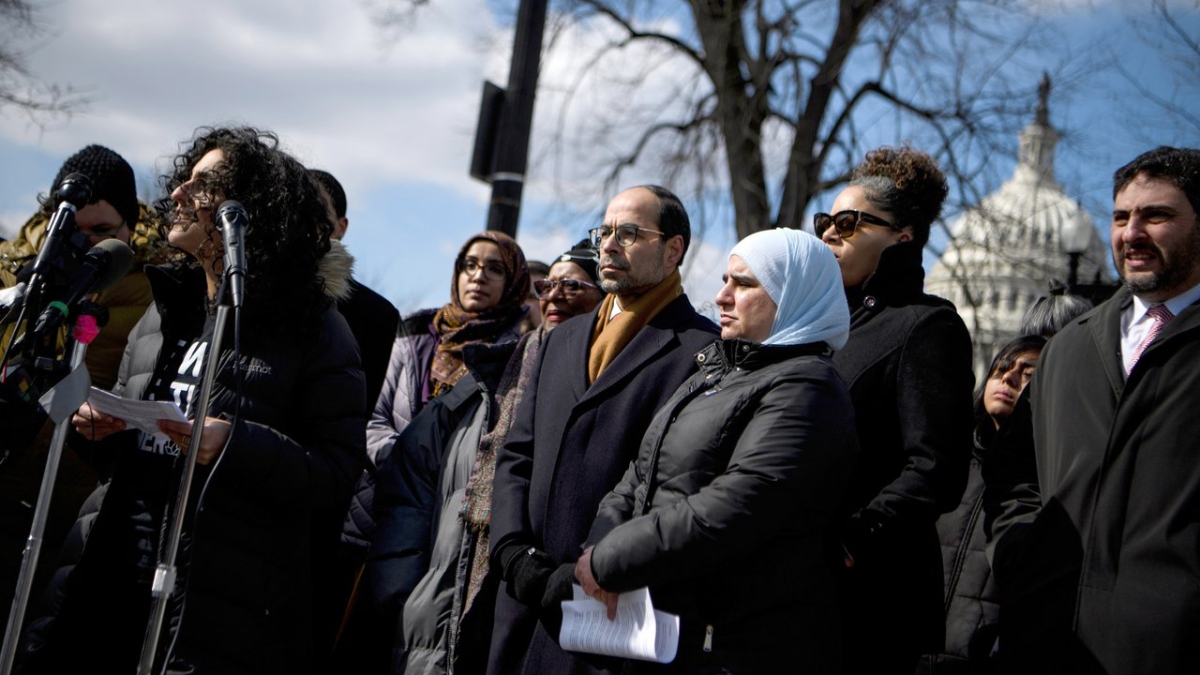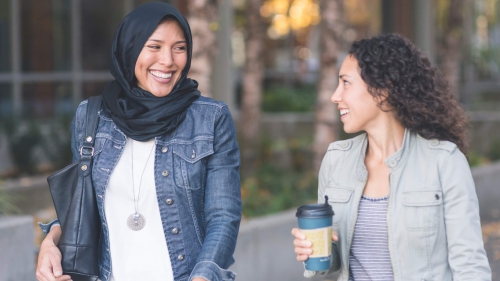Courting Arab American Voters: The New Normal

Thirty-six years after Reverend Jesse Jackson first welcomed Arab Americans into his Rainbow Coalition, the 2020 Democratic primary contests held thus far have seen Arab American communities across the country courted by a number of Democratic presidential candidates. The community’s involvement has become an accepted fact.
This wasn’t always the case.
The 1980s, when Arab Americans were just beginning to organize as an empowered community, were especially hard. Because some major American Jewish groups saw us as a threat to their dominance in the debate over US-Middle East policy, they spared no effort to isolate us, defame us, and silence our voices. Candidates were pressured to return Arab American contributions, reject Arab American endorsements, and dismiss Arab American staffers. Too many weak-kneed politicians complied.
After facing what we called the “politics of exclusion,” we focused energy and resources to registering and mobilizing Arab American voters. It was our growing numbers and increasingly sophisticated involvement in the political process that ushered in a new era. The community entered the U.S. political mainstream.
In cities like Dearborn, Michigan, long known for being home to the largest concentration of Arab Americans in the US, this change meant going from being labeled the “Arab problem” by local officials to registered voters whose support could sway the outcome of elections.
On the national level, it was Jackson who first recognized the benefits of welcoming the Arab American voters into his coalition. Because we were viewed as “the new kids on the block” and because there was still pressure to shun our involvement, the news media reported Jackson’s every encounter with us.
Toward the end of the hard fought 1988 primary, Jackson came to me before the California primary and said, “Your people have made it. When we did Arab American fundraisers in New York, Pennsylvania, Michigan, Illinois, Arizona, and Texas, the traveling press would write stories about ‘Jackson getting Arab money.’ We just did one in San Diego and they ignored it completely. Working with your community is now normal. That’s a victory.”
That trend of becoming an engaged, organized electorate continued and by the 2000 election, Newsweek magazine noted that Arab American voters, “could prove decisive in key states like Michigan, Ohio, and New Jersey.”
Twenty years later, the concentration of Arab Americans in swing states has accounted for a few major candidates paying attention to the community. Several states which will likely be crucial for any presidential candidate to win come November, are also home to the largest populations of Arab Americans, such as Florida, Michigan, Pennsylvania, Ohio, Texas, and Virginia.
This is why this year, we saw major contenders for the Democratic nomination engage in unprecedented and unreported efforts to court the Arab American vote during this year’s primary. Notably, Senator Bernie Sanders’ campaign regularly produced Arabic language posters and social media images. Sanders received the endorsement of prominent Arab Americans from across the country and energized young Arab Americans in support of their “Amo Bernie.”
Senator Elizabeth Warren did the same. In one of her many highly-touted plans, Warren referred to “moments of immense strength and solidarity because of movements that have been powered by Black and Brown Muslims and Arab Americans,” and addressed many issues of mutual concern between the communities. Both of these campaigns had Arab Americans as advisers or in key staff roles. Former Vice President Joe Biden also had a number of Arab Americans in his campaign, especially in Michigan.
Broadly, Arab American voters are quite similar to most Americans in the issues that are most important, though they have heightened concerns for issues such as civil liberties, discrimination, and U.S. policy in the Middle East.
President Donald Trump will likely skip courting the Arab American vote, as his policies have largely alienated much of the community – capping off the 16-year drift of Arab Americans from an even split between Democrats and Republicans (with a sizeable minority of independents) to becoming a reliable Democratic voting bloc.
Though states with influential Arab American populations, like California and Michigan, have already voted, nearly half of Arab Americans have not yet had an opportunity to vote in the presidential primaries. States with significant Arab American populations which have yet to vote include Florida, Illinois, Ohio, Maryland, New York, Pennsylvania, and New Jersey.
And then we’ll be on to the November general election with Arab Americans working hard to build on the successes of their past hard work which has enabled them to become just another constituency of note, in the broad and diverse American electorate. They are now free of the burdens of exclusion and can work to hold candidates and elected officials accountable for not only what they have done in the past, but also what they intend to do in the future. This is the most important step we can take toward becoming a normalized civic force no campaign can ignore, now and into the future.
Topics: American Muslims, Arab Americans, Elections
Views: 1607
Related Suggestions

















